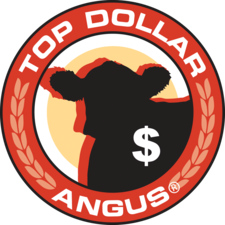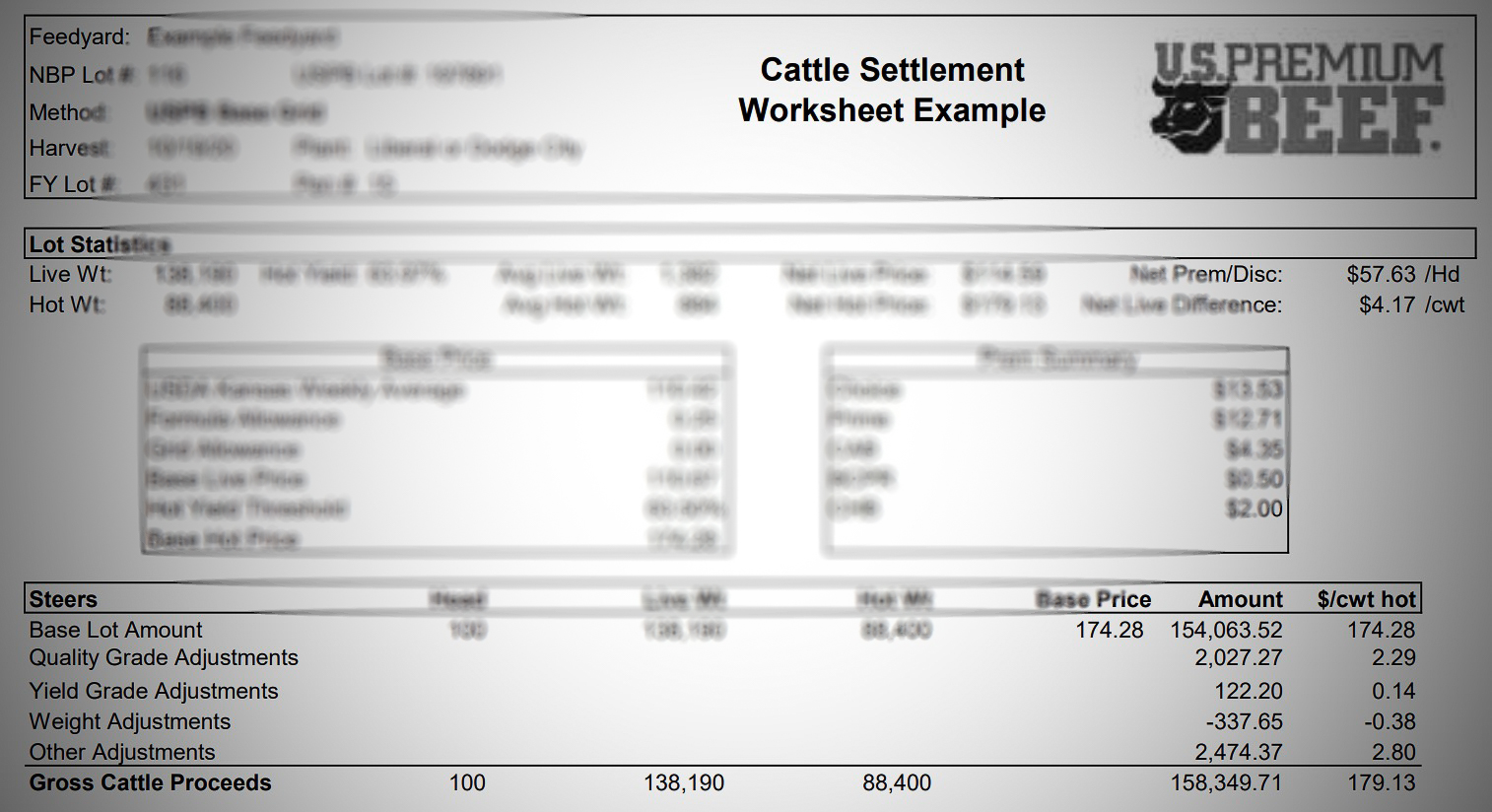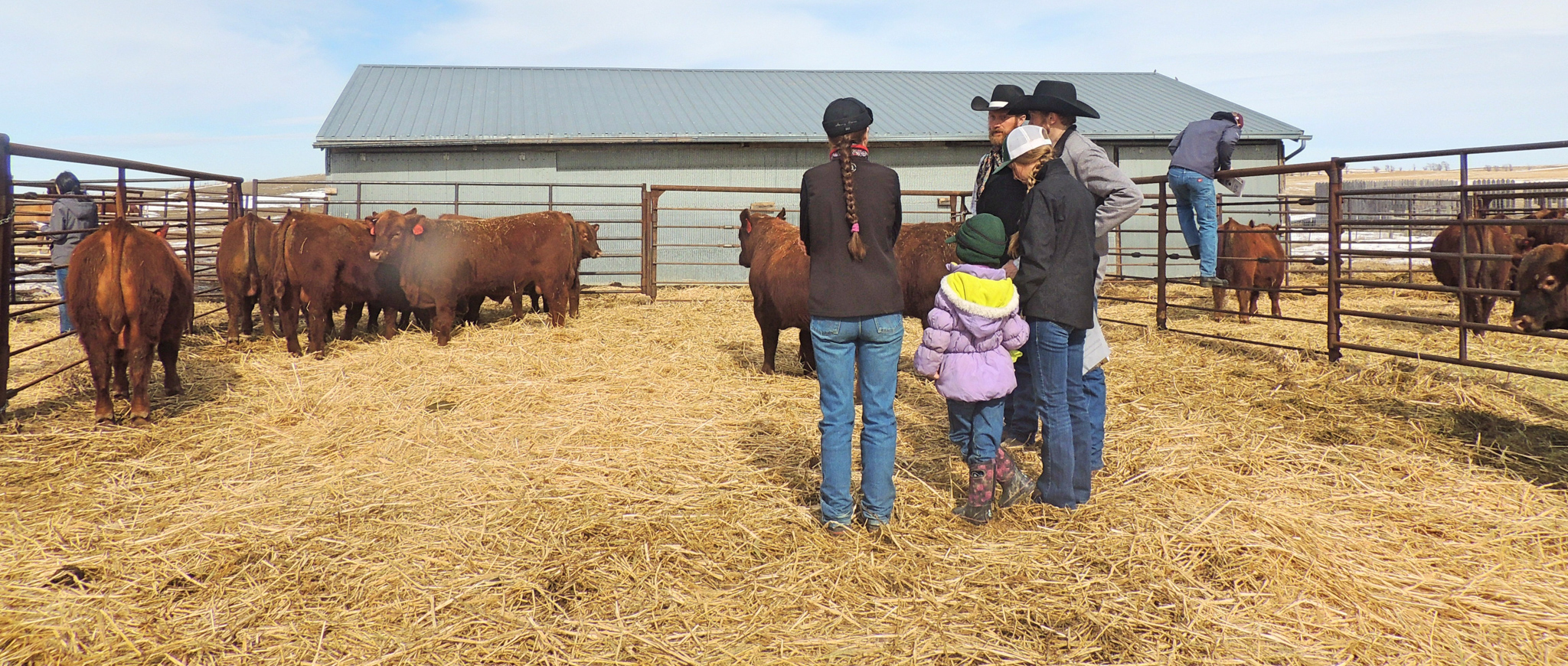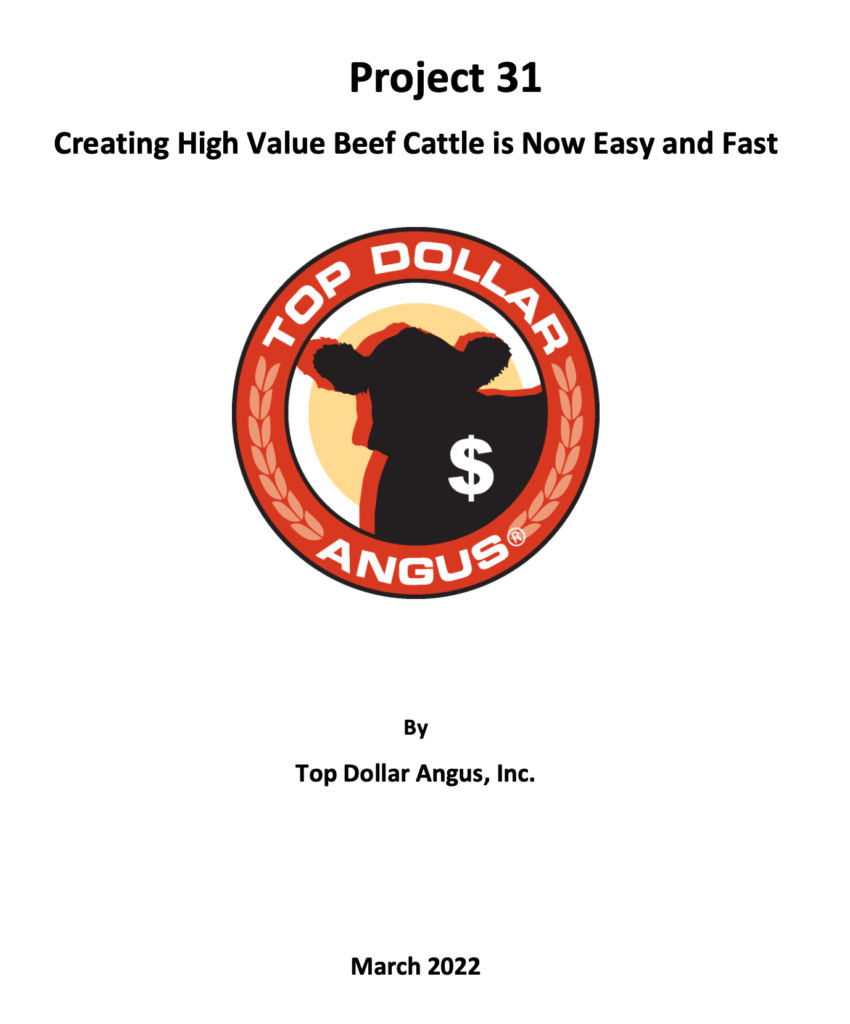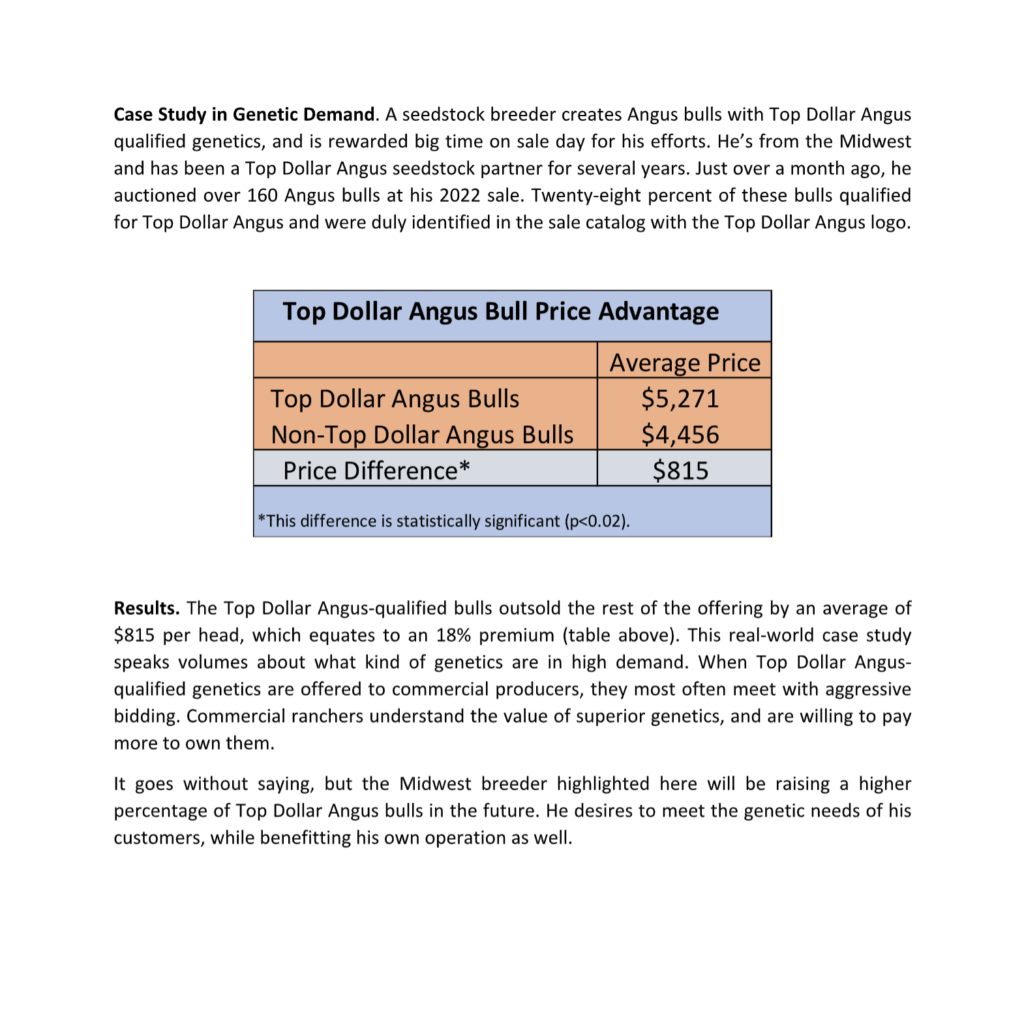Recent Publications
Quantified Genetics.
All cattle have genetics, but for most commercial cattle, those genetics are unknown.
Less than 1% of today’s feeder cattle are marketed with specific genetic information on important traits like growth, marbling, and muscling potential. That puts a big hole in a feedlot buyer’s understanding of how cattle will perform from one group to the next. Fully one-third of performance and financial outcomes are driven by genetics. Repeating for emphasis: ONE THIRD of the cattle feeder’s bottom-line results are determined by genetics.
We can eventually eliminate this problem by shifting the industry from unknown genetics to quantified genetics.
Below is what example of what quantified genetics look like: A commercial Angus-based animal is DNA tested with Igenity Beef®. On the 1-10 scale Neogen uses to rank Igenity Beef results, this young bovine scores 6 out of 10 for ADG, 6 for Marbling, 7 for Ribeye Area, and 5 for Carcass Weight. His four-trait average score is 6.0 (average of 6, 6, 7, and 5). Hence, he has become genetically quantified and is also Top Dollar Angus qualified, because he meets the required 6.0 or higher average score on the four growth and carcass traits Top Dollar Angus evaluates.
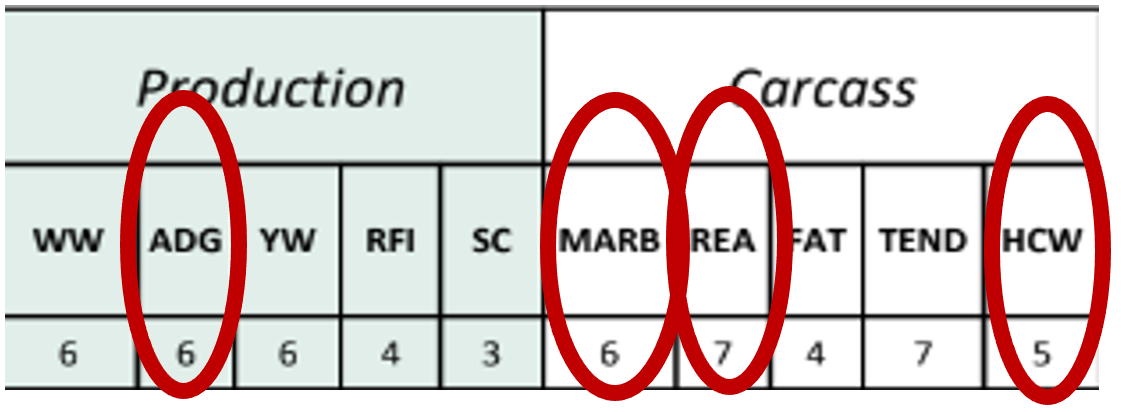
Based on his Igenity Beef scores, we now know this particular animal’s genetics are better than 75% of all cattle in the industry. He’s in the Top 25% for growth and carcass traits, and his genetics will generate above-average earning power through the feedyard and on the grid. If that sounds simple, it is. Better genetics make more money through higher performance and carcass value.
Top Dollar Angus-qualified cattle represent quantified genetics in that they’ve been objectively measured, and they are more valuable because they rank in the top 25% of the industry’s cattle population.
Top Dollar Angus Seedstock Partners Sell Angus Bulls at Higher Prices
Analysis of 298 Angus bull sales held from January-April this year uncovered a financially important fact. Top Dollar Angus Seedstock Partners sold bulls for $1,027 more per head, on average, versus non-Top Dollar Angus Seedstock Partners. See summary information below.
Angus Bull Price Comparison:
Top Dollar Angus Seedstock Partners $6,485 average bull price (42 sales)
Non-Top Dollar Angus Seedstock Partners $5,458 average bull price (256 sales)
Difference in average price $1,027 per bull
Note: This price difference is statistically significant (P<0.001).
Data Source: Sale summary information came from sale reports on the AAA website.
The explanation for such a large difference is two-fold. First, Top Dollar Angus genetics (bulls with top 25% growth and carcass EPDs) are in greater demand by commercial cattlemen. Ranchers prefer these bulls and are generally willing to pay more to own them. They desire premium bull genetics because they know the value of their calf crops will increase.
Second, by being a Top Dollar Angus Seedstock Partner, the superior genetics in the sale offering are third-party verified and differentiated in a positive manner to prospective buyers. A bright light of recognized excellence is shown on the entire bull offering, and especially on those individual bulls which are Top Dollar Angus-qualified and that carry the well-known Top Dollar Angus logo in the sale catalog. Of course, the Top Dollar Angus feeder cattle program is part of the package too.
Astute seedstock producers constantly seek to meet the demands of commercial cattlemen, and by doing so can improve their own results on sale day. Top Dollar Angus Seedstock Partners understand this and have aligned their genetics with what commercial buyers demand. They are being rewarded accordingly. Top Dollar Angus does its part by making sure they stand out in the crowded field of bull sellers. It’s a win-win situation backed up by real-world results.
